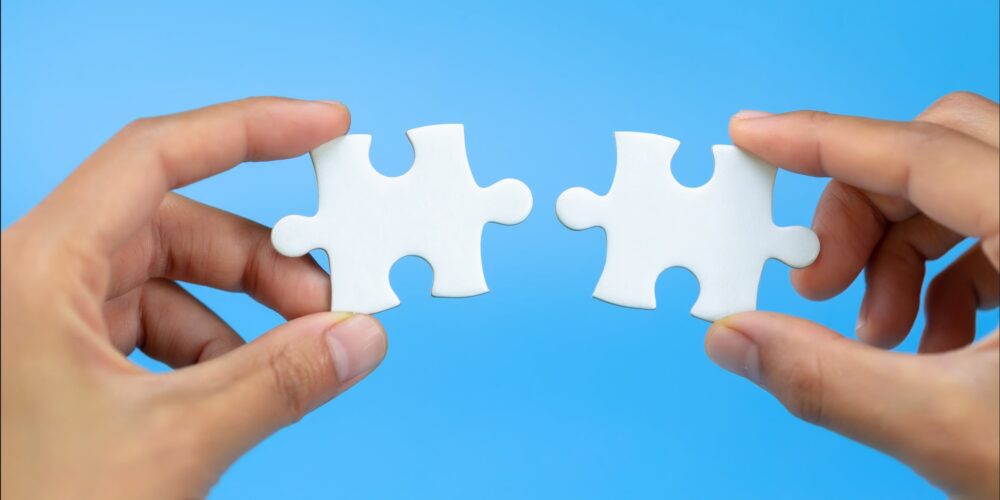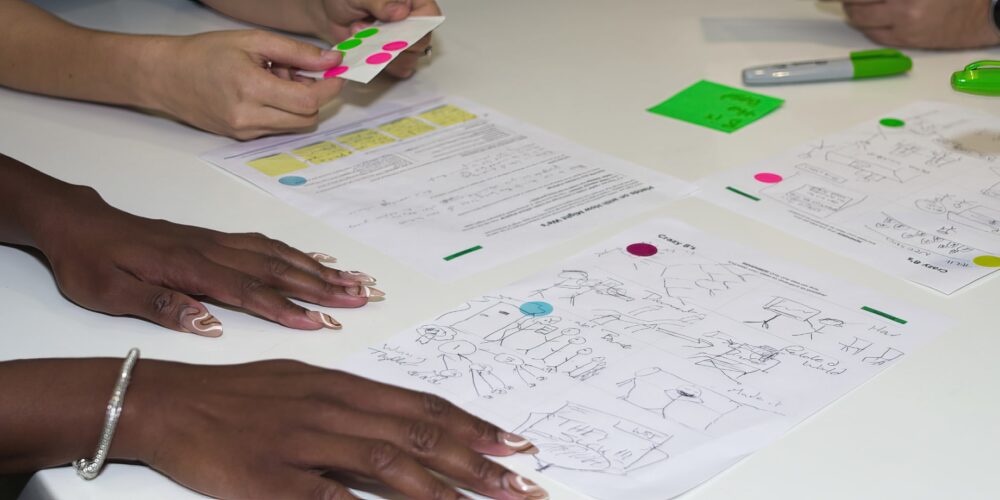
I Bet Santa Uses Design Sprints
Unwrapping Success: Using Design Sprints to Hack Your Holiday Gift-Giving
As the holiday season approaches, the quest for the perfect gift begins. It’s an annual ritual that blends excitement with a touch of, well, anxiety. Why? It’s not just the thought of braving Black Friday Sales or local mall parking lots that adds stress. It’s because choosing gifts for loved ones, colleagues, or friends isn’t just about the act of purchasing; it’s an exercise in empathy, insight, and thoughtfulness.
Empathy, insight, and thoughtfulness, you say? That sounds ripe for some good old-fashioned design thinking! In a world where we’re constantly seeking efficient solutions to complex challenges, could a strategy from the business world, such as the design sprint framework, be the key to mastering the art of gift-giving?
The design sprint, a staple business strategy tool in the business world, is hailed for fostering innovation, addressing complex issues, and streamlining decision-making. This process is traditionally applied to product development or service enhancement, but it can be a game-changer in personal contexts too—like selecting thoughtful holiday gifts.
This methodology involves five phases: understanding, ideating, deciding, prototyping, and testing. Let me show you how those phases apply here.
Understanding the Recipient – The First Step to Personalized Gifting
The ‘gift guide for guys’ or ‘gift guide or moms’ type round ups cluttering the internet are stale and nearly useless. Jack Black and your dad are both guys, but the Venn Diagram of their interests could be completely empty in the overlap. In the initial phase of a design sprint, understanding the challenge is critical. For gift-giving, this translates to comprehending the recipient’s world. What are their unmet desires? What small annoyances in their daily life could you alleviate with a thoughtful gift? What does mom actually mean when she says, “You don’t need to get me anything”?? This stage is about gathering insights, almost like a detective, to create a foundation for your gift choice.
One tool used to understand users (or in this case, the giftee) in a design sprint is a customer journey map. The goal of a customer journey map is to visually see all the who’s and what’s that your giftee might interact with. Typically you start with the end of a journey and work backwards to fill in other interaction points. You might have a clear idea of what that endpoint is for your giftee if you’ve already honed in on a particular hobby (eg Giftee loves birdwatching, the endpoint is a successful bird watch hike) or you could start broad and look at what a typical week or month looks like. Let’s look at both examples:
Your birdwatcher is preparing to go on a hike. They’ve found a local interest group and it’s their turn to pick a location. They spend time looking at bird maps to determine which areas might have the desired birds. Day of, they start packing their bag; binoculars, notepad, sun hat, identification book, water bottle. They get to the meet-up spot and start hiking. The terrain is rockier than they expected and their usual sneakers were fine for flatter ground, but are now having a hard time keeping up. A little drizzle comes in, and with the change in weather, birds! They excitedly get out their notebook to capture observations. After a long, successful hike, they head home to research more about the birds they saw.
What stood out in this brief journey map? What are some areas that could be enhanced or problems to solve? Looking at the preparation part of the journey, you can start thinking about what resources are there to help pick hikes. For the hike part of the journey, you can look at what gear could be upgraded to be safer, more usable, or personalized. At the end of the journey, what could research look like?
Alright, that’s a pretty specific example. Let’s zoom out for a more general map.
Over the course of a month, what kinds of activities does your giftee do? Do they commute or work from home? Do they make coffee at home or grab some on their way into the office? Are there any classes they attend? How do they decompress after a busy week?
If you don’t know where to start your map, schedule a coffee date and treat it like an insights project. Ask open ended questions. Genuinely lead with curiosity. You’ll get the info you need plus some great quality time.
By imagining how your giftee lives life, versus boxing them into a persona, you start finding those unexpected opportunities to truly delight them.
Ideation – The Creative Playground
Next is the ideation phase, where you brainstorm without limits. You’ve set a strong foundation by identifying various areas for high gifting impact and setting a gift goal.
Like a design sprint ideation session, let’s start with inspiration. Be specific but flexible with your search terms. Going back to our birdwatcher, I’d try ‘waterproof birdwatching journal’ or ‘bird migration books’. The book search might lead me to an atlas of migration maps or ‘The Field Guide to Dumb Birds of North America’. You know, range. It can be overwhelming to try to make a decision as you look for ideas, so keep a running list of the gifts as you go so you can evaluate them later.
If you want to get really creative, you can go even further and create a ‘story’ gift. Bundle together several thematic items to gift a complete experience. In design sprints, we are always looking for ways to tell the story of users. A story gift puts your giftee at the heart of their own story.
If thinking of gifts last minute stresses you out each year, keep a digital list with idea buckets that you can save to as you see them. I use Trello and create cards for each person in my life to organize interest notes and save ideas throughout the year.
Deciding – Filtering Ideas to Find the Gem
Then comes the convergence phase, where desirability meets up with feasibility and viability. Filter through the brainstormed ideas and select those that are practical, meaningful, and likely to bring joy… and also maybe that you can afford (even Santa has to pay his elves). In design sprints, this process involves choosing the most feasible and impactful ideas. Apply the same logic to your gift selection, balancing practicality with innovation.
Prototyping – Adding a Personal Touch
Prototyping in a business context is about creating a tangible version of an idea. For gift-giving, think of this as making your gift an experience versus ‘just’ an item. It could mean customizing a product, DIYing a gift, creating a scavenger hunt for gift clues, or even planning a surprise event. This phase is about infusing your gift with personal touches that convey thoughtfulness and care.
Testing and Feedback – The Learning Phase
OK, so you can’t test a gift on the exact “user” in these situations, but you can test by asking those close to your recipient for their feedback. Or, if you’re capable of subtlety (unlike me), you can sneakily find ways to get feedback directly from the receiver in super casual, definitely-not-out-of-the-blue conversation. And, finally, you can test in the moment—by observing the recipient’s reaction. In gathering this feedback, you store some crucial data (pushing glasses up) for refining future gift choices and becoming more attuned to the preferences of your loved ones.
Empathy + Innovation = Awesome, Santa-Level Gifts
When you combine empathy and creative thinking, beautiful things happen. It’s true of design sprints and it’s true of gifts.
- At the center of both design thinking and effective gift-giving is empathy. Truly understanding the recipient’s likes, dislikes, and subtle wishes is key. This might involve recalling past conversations, noting their interests, or observing their lifestyle. Empathy-driven gifting ensures that your presents are not just well-received but cherished.
- Innovative gifting means thinking creatively about how to offer something uniquely tailored to the recipient that they will truly cherish. This could be an adventure experience for the thrill-seeker, a personalized piece of art for the creative soul, or a tech gadget for the gadget enthusiast, but with a twist that makes it special.
Remix! Here are some other ways to incorporate design sprinting into your gift scenarios.
Design Sprints for Group Gifting:
Group gifting, often a challenge in terms of coordination and agreement, can also benefit from the design sprint approach. Use the framework to understand group dynamics, brainstorm collectively, decide democratically, and prototype a group gift that resonates with everyone involved.
Incorporating Sustainability and Mindfulness:
In today’s world, mindful and sustainable gifting is increasingly important. During your design sprint-inspired process, consider gifts that are environmentally friendly, support local businesses, or give back to the community. This adds another layer of thoughtfulness to your gifts, and makes you extra awesome (just saying).
Embracing the design sprint framework for holiday gift-giving transforms a potentially stressful and chaotic task into a structured, creative, and enjoyable process. It’s not just about finding a gift; it’s about discovering a meaningful connection that delights and surprises. This holiday season, step beyond the traditional, employing empathy, innovation, and strategic thinking to give gifts that truly resonate with our loved ones. As we unwrap the power of design thinking in our personal lives, we find that the best gifts come from understanding, creativity, and a deep sense of connection.




